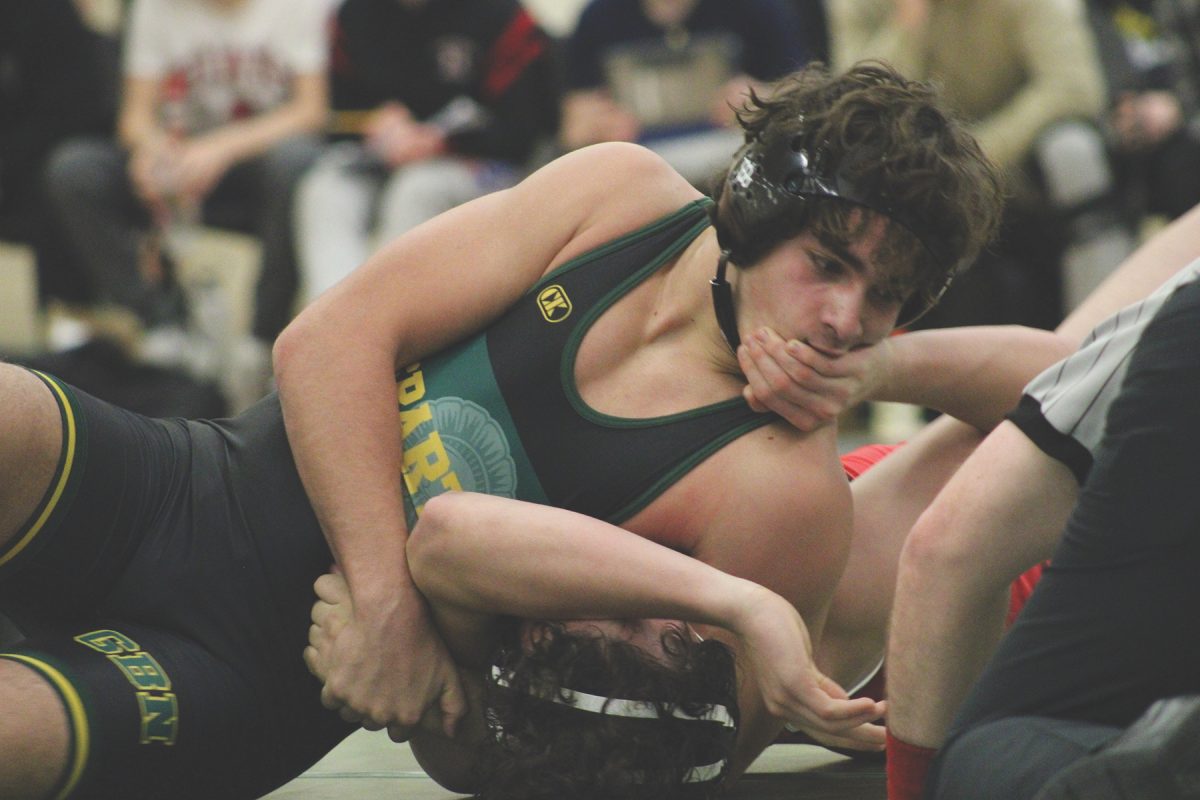Down by three points, junior Cray Paich entered the last period against his heavyweight competitor from Maine East in a match at the Cougar Thanksgiving Invitational on Nov. 25.
“There was an entire crowd around me and my opponent,” said Paich. “All the wrestlers were watching [this] one match, and a bunch of people [were] screaming at me to do certain things, and it was just kind of crazy. It just felt like there was a knot in my stomach as I looked at my opponent.”
Paich lost the match by one point, ending with a final score of 8-7. He placed fourth in his weight division, and the team placed first overall.
The weight range for the heavyweight division spans from 215 to 285 lbs., making it the division with the largest weight gap.
The mental strength to navigate a heavyweight match is essential, and wrestlers must stay composed, calculating their moves with precision, all while managing the pressure of competing against opponents of significantly different builds, head coach John Gilchrist said.
“[Heavyweights] might be long limb, shorter limb, stockier, longer, larger,” said Gilchrist. “So right away, [heavyweights ask themselves], ‘What’s the best thing I can do against my opponent?’”
The heavyweight division introduces distinct challenges due to the wrestlers’ larger sizes, but the fundamentals remain consistent across weight classes, Gilchrist said.
During practice, to help navigate difficult situations and master techniques, some wrestlers occasionally wrestle with coaches in similar weight classes to simulate matches.
“It helps us because it teaches us to wrestle against bigger guys and be able to work out of situations with a heavier person on us,” junior Mathew Gasior said.
According to junior Shane Onixt, the team operates cohesively, emphasizing unity and support regardless of weight class or gender.
The entire team dedicates around 30 minutes at the beginning of each week to reflect with the coaches on the previous week’s highlights, evaluate the team’s overall performance, call out outstanding performers and brainstorm strategies for improvement, Onixt said.
“Everyone is sharing their successes and their losses together, feeling it together, and living it together,” Onixt said.
“[Wrestling is] so much mental work, in any sport, but especially wrestling, because it really tests your physical limits,” said Gasior. “No matter how far you think you can go, you can always go more.”


